The best business computers of 2025: expert picks for professionals
We put the best business PCs and desktops through their paces
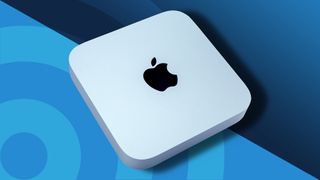
The best business computer delivers flawless performance for all productivity tasks - and these are my top picks and recommendations for all professional use.
My team of expert reviewers have extensively tested the best desktop computers, best business laptops, and the best business Mac and MacBook laptops. So, we know what a machine needs to get any job done.
For that reason, the Apple iMac 24in and the Dell XPS Desktop for Windows users are the best business desktops for most people. Both PCs offer incredible power, top-end specs, and all the connectivity you need to run a business.
Check out the full round-up below, with options for all budgets and business sizes. Benchmark tests have been run on each model to ensure they deliver the experience professionals demand. And for more desktop power, we also tested the best workstations.
Quick list
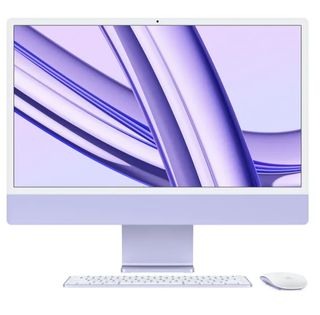
The best business computer overall
There are many all-in-one PCs on the market, but this Apple offering beats them all in performance, design, and footprint, now with the power of Apple's new M3 chip.
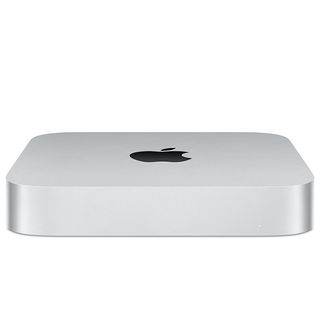
Best budget business computer
Despite its compact size, it's capable of handling demanding business workloads, thanks to that M2 and M2 chip inside, while still retaining an affordable price point.
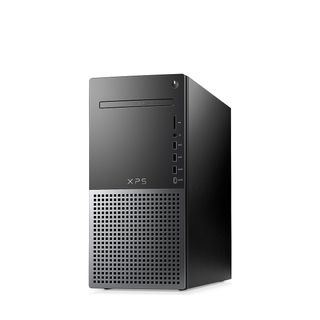
Best business tower PC
When it comes to performance, the XPS line remains top of its class, whether you need something for office and casual use or for creative workloads.
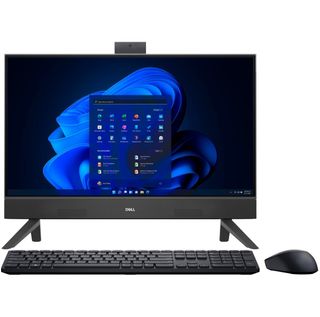
The best Windows AIO for business
The Dell Inspiron 24 AIO stands out in the budget PC market with its respectable performance for business tasks, upgrade options for creative work, and versatile port selection.
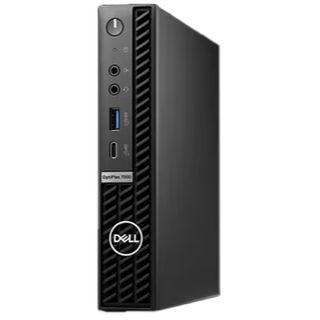
The best mini PC for business
With its compact size, the Optiplex 7000 Micro is ideal for businesses and clinics with limited space, supporting up to 4 displays and 12th Gen Intel processors.
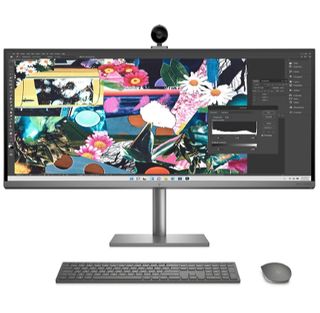
The best business computer for creatives
The HP Envy 34 AIO earns a rare five-star rating, offering Windows users an iMac alternative with powerful specs, a stunning 5K display, and expandability options.
The best business computers in 2025
Why you can trust TechRadar
Below you'll find full write-ups for each of the best business computer picks on our list. We've tested each one extensively, so you can be sure that our recommendations can be trusted.
The best business computer overall
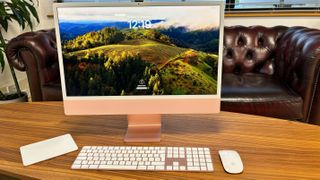
Specifications
Reasons to buy
Reasons to avoid
Apple's iMac, with its latest M3 chip iteration, has solidified its position as the unparalleled leader in the all-in-one (AIO) computer market, especially for business environments. This model marks a significant enhancement over its M1 predecessor from 2021, showcasing exceptional performance that sets a new standard for AIO systems. It's not just about the internals; the iMac's 24-inch 4.5K display continues to stun with vibrant colors and impressive brightness, complemented by a high-quality 1080p webcam.
Despite its robust performance, the iMac remains astonishingly sleek and lightweight, making it an ideal choice for professionals seeking premium computing power without sacrificing desk space. The option to personalize your workspace with various colorways adds to its appeal for businesses aiming to blend functionality with style.
While it retains some less favored aspects of the 2021 model, such as limited port options and quirky design choices with peripherals (like the inconveniently placed charging port on the Magic Mouse), these are minor blemishes on an otherwise exemplary business computer. Even the base model's 8GB of RAM and 256GB of storage, which may seem modest, hardly detract from the iMac's status as the best business computer on the market, offering a near-perfect blend of performance, aesthetics, and user-friendly design.
Read the full iMac 24-inch (M3) review
The best budget business computer
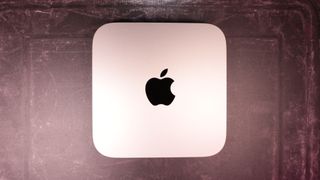
Specifications
Reasons to buy
Reasons to avoid
Small, sleek, beautifully designed, and immensely powerful - there’s a lot to admire in the Apple Mac mini. A compact business PC that’s powerful enough to tackle just about every task - from running office apps to complex video editing projects.
Apple devices are renowned for their performance, and we found the Mac mini no different. Powered by the M2 and M2 Pro chips, depending on your chosen configuration, it capably handled every task we threw at it during our simulated and real-world benchmark tests - and came exceedingly close to matching the prowess of the excellent MacBook Pro.
It’s not upgradeable, which may be an issue for some IT teams who like to be able to update and repair with ease. But as a ready to go macOS computer, it’s difficult to find much fault here. The device even offers good value for money, with prices starting at around the $600 / £600 mark - a fraction of the cost of business desktop computers.
Read the full Apple Mac mini, M2 (2023) review.
The best desktop tower PC for business
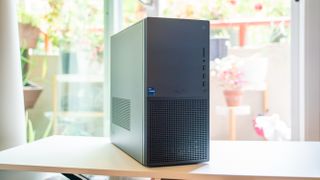
Specifications
Reasons to buy
Reasons to avoid
Like the Millennium Falcon and your very first car, the Dell XPS Desktop might not look like much, but it’s got it where it counts.
The design is the first thing we noticed when we reviewed the 8960 model. At first glance, it’s difficult to see this as anything more than just another humdrum business PC. That classic tower design, in bland black, same as so many. With its half-vented facade, it’s not dissimilar to a modern-day games console. And it is, perhaps, the first subtle hint that this business desktop computer has a lot more to offer.
Putting the XPS Desktop to the test, we were seriously impressed. In our original review, we primarily checked on gaming performance. We went as far as to describe it as “breathtaking.” If a machine like this can handle the likes of GTAV and Cyberpunk 2077, it’s more than capable of powering through spreadsheets, emails, video calls, graphic design - and you can probably open all the tabs you’ll ever need in your browser all at once. Ordinarily, we might not recommend a gaming PC as an option for the best business computer. But that professional design means it can seamlessly fit into any office or home office, ready for work and play.
Read our full Dell XPS Desktop review
The best Windows all-in-one business computer
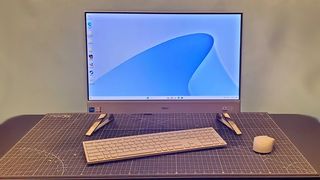
Specifications
Reasons to buy
Reasons to avoid
At its core, the Dell Inspiron 24 is the ideal general-purpose business workstation for clerical and other basic productivity work, thanks to its 13th-Gen Intel processor, which, alongside up to 16GB of RAM and 512GB of storage, provides a solid foundation for productivity tasks, making it an ideal choice for business users and students alike.
Those requiring additional power have the option to upgrade to a more robust setup featuring a 13th-Gen Intel i7 processor, 16GB of RAM, 516GB of storage, and an Nvidia GeForce MX550 GPU.
The AIO design integrates a webcam that offers a practical solution to privacy concerns, though it could be more user-friendly in its deployment. Despite the webcam's average quality, it suffices for standard business communications. Connectivity is a strong suit of this PC, with an extensive range of ports that cater to various peripheral needs, although the limited USB Type-C port and awkward placement of other ports pose minor inconveniences.
The Inspiron 24's lightweight build and AIO configuration ensure ease of setup and mobility. The display, a 24-inch FHD touchscreen with anti-glare properties, enhances user interaction and productivity, despite the subpar sound quality that is best suited for basic tasks.
Performance-wise, the Dell Inspiron 24 impresses with its capability to handle business applications and multitasking with ease, especially in its higher-spec configurations. The processor delivers fast and responsive performance, adept at managing a variety of business-related tasks without compromise, making the Dell Inspiron 24 AIO an excellent choice for businesses seeking a capable, versatile, and budget-friendly computing solution.
Read the full Dell Inspiron 24 All-In-One review
The best mini PC for business
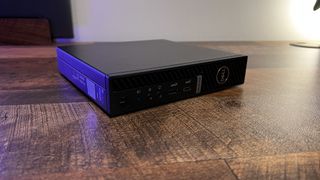
Specifications
Reasons to buy
Reasons to avoid
For such a small form factor, the Dell Optiplex 7000 Micro offers an impressive desktop option for businesses, clinics and those short on space. With optional mounting brackets, we can see this machine fitting in a variety of office spaces – under desks, on the back of rolling carts, or only taking up the space of a book on your desktop.
With support for up to 4 independent displays and 12th Gen Intel processors with vPro security features, we think this little machine will be a favorite of IT professionals and end-users alike. Ports along the front and back offer flexible connection options in a sleek profile. We only wish Thunderbolt ports were included.
Read the full Dell OptiPlex 7000 Micro PC review
The best business computer for creatives
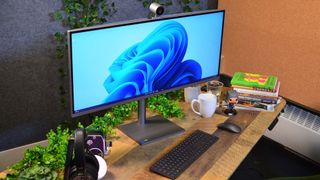
Specifications
Reasons to buy
Reasons to avoid
The HP Envy 34 all-in-one computer is undeniably powerful, offering an excellent iMac alternative to Windows users who want outstanding design, fantastic features, and great performance for a relatively affordable price. Our coveted five-star rating is rarely given, which should speak volumes about how impressive it is. That's despite the fact that it runs a last-gen Intel processor and a mobile GPU.
Among the many things we appreciate here are its movable 16MP webcam and excellent selection of ports. On test, however, it's its stunner of a display that hogs the spotlight. This height-adjustable, 34-inch, 5K 21:9 screen isn't just gorgeous; it's also bright with 500 nits of brightness and 98% coverage of the DCI-P3 gamut, which makes it ideal for video editors that work in that color space.
Don't like upgrading to a new computer every couple of years? It's also expandable up to 4TB M.2 storage and 128GB DDR4 RAM so there's room to grow here.
Read our in-depth HP Envy 34 All-in-One review
Find the best deals on HP products with our HP coupon codes.
The best business computer: FAQs
What computer is best for business?
A recent development in the desktop PC world has been a modest diversification of the system case. The typical business PC comes in a mini-tower box, probably best suited under or beside your desk.
But a smaller case would be a better choice if space is at a premium. Dell, for example, delivers its Optiplex models in the mini tower, 'thin' desktop, and 'compact' small form factor sizes, each offering the same computing power but in a different case.
Three other formats that have grown in popularity are:
1. All-in-one, or AIO, combines the monitor with the base unit. The move to power-efficient components, the falling price of LCD panels, and the ubiquity of touch functionality make AIO an increasingly popular choice for businesses. The all-in-one PC resembles a slightly larger than normal LCD display containing the processor, hard drive, and memory built into the screen casing. The end result is a very elegant, clutter-free desktop PC.
2. Ultra-small form factors, known as nettops or mini PCs, borrow many of their designs (and components) from laptops. They are laptops without a screen, input peripherals, and battery.
3. HDMI dongles inspired by tablets and smartphones often share parts with the latter. These are usually used for display signage or in niche markets. They are usually not powerful enough for most tasks, but things will likely improve with the expansion of Thunderbolt technology.
What is the difference between workstation vs desktop PC?
• TechRadarPro Q&A with Anu Herranen, Director of New Product Introduction, Advanced Compute and Solutions at HP Inc.
The main thing here is that you must ignore the form factors. In this case, the question would be, what is the difference between a (regular) desktop PC and a desktop workstation? The answer is that the workstation has been developed for a specific professional workflow.
It is not just about the raw performance of a device's processor or other components. It is about how well they perform in specific tasks relevant to the work they are designed to do. Do they make that system easier and faster and remove unnecessary complexity so you can focus on the task and be more productive and creative?
Usually, data scientists will not emphasize the color accuracy of a display. Still, they will care about having a device that can process huge data sets for hours without crashing mid-way. A graphic designer or VR developer, on the other hand, will care about processing jobs quicker by managing how power is split between the CPU and GPU, depending on the task.
You also need to get beyond the box. What software stack or operating system does the workstation need to run? Does the workstation need to run the full Adobe creative suite? Are the keyboard and other input devices optimized for the user's needs? Examples might include a VR headset or a set of separate programmable keys.
Security and manageability in workstations are also designed to work seamlessly across the whole stack and conform to specific requirements defined by role and managed by IT departments. Devices are often configured to get the best out of a given software. They may even carry certifications that guarantee performance for certain software, such as those from Autodesk.
All of this adds up to a curated experience – a device dedicated in every way to a workflow and ready to go out of the box, saving days of configuration time.
The final key difference is that workstations are very expandable – designed with upgrading in mind. Whilst that is true of many PCs, workstations are engineered with this capability in mind. A workstation is designed to be a device that can expand with your needs over a long period of time.
How to choose the best business computer for you
When choosing the best business computers for yourself, start by assessing the nature of your business, the number of computers you need, and the operating system.
If your work primarily involves using office apps, emails, web browsing, or data entry, an entry-level business PC should work perfectly well. If you're in architecture, graphic design, or any other field that demands the use of resource-intensive apps, then you'll want to opt for powerful computers with impressive graphic capabilities. We've reviewed the best photo editing PCs and best video editing PCs for professional content creation.
How much RAM you need will depend on how resource-heavy the apps you use are and whether you do a lot of multitasking. The more apps you run simultaneously, the more RAM you'll want for a smoother experience.
You'll want to evaluate what operating system works best for you. If your employees are used to working on Windows, sticking to that is more efficient than switching to a new system.
Consider the size of the machines if you don't have a lot of desk space or want a neat workplace setup. You'll also want to consider the pricing of the computers and whether the seller offers discounts on bulk purchases.
How we test the best business computers
Our team has gone hands-on with everything from the best business tablets and best business monitors to the best mini PCs to find out which business devices offer a genuine productivity boost. To test the best business computers, we first looked at their specifications, like the CPU, graphics, RAM, storage, connectivity, and dimensions. We considered the types and sizes of businesses they'd be suitable for and whether the tech configurations were expendable.
We assessed how well they handled multiple apps simultaneously, how smoothly they ran resource-heavy apps, and how easy the setup process was.
We evaluated the dimensions and weight of the computers to check whether they take up a lot of desk space and are light enough to be moved around easily. We also considered whether the computers had dual monitor capabilities, ports for external displays and swift wireless connectivity.
We tested out the best MacBook Pro laptops for when you need to get work done
Are you a pro? Subscribe to our newsletter
Sign up to the TechRadar Pro newsletter to get all the top news, opinion, features and guidance your business needs to succeed!

John (He/Him) is the Components Editor here at TechRadar and he is also a programmer, gamer, activist, and Brooklyn College alum currently living in Brooklyn, NY.
Named by the CTA as a CES 2020 Media Trailblazer for his science and technology reporting, John specializes in all areas of computer science, including industry news, hardware reviews, PC gaming, as well as general science writing and the social impact of the tech industry.
You can find him online on Bluesky @johnloeffler.bsky.social
- Bryce HylandContributor
- Desire AthowManaging Editor, TechRadar Pro
- Collin Probst